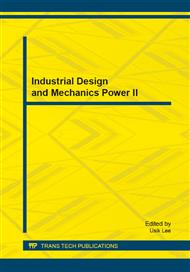p.181
p.186
p.190
p.194
p.198
p.202
p.207
p.213
p.217
A Study of the Simulation of a Light Trapping Module for Increasing the Absorption Efficiency of Solar Cells
Abstract:
This study proposed a light trapping module to improve the light path in a solar cell in order to increase its light absorption efficiency. The microlens on a transparent substrate concentrates incident light into several light beams, which it leads into the optical channel on the back side. The optical channel is designed by coating highly reflective metals on the same transparent substrate, then an optical channel opening is made at the light beam focus so the light beams can pass through the optical channel and irradiate the solar cell. The light reflected by the solar cell is reflected again by the metal surface to the upper film of the solar cell, thus, increasing the absorption efficiency of the solar cell and reducing the film thickness of the solar cell to obtain better electrical properties. In this simulation the refractive index of the microlens was set as 1.43, the optical channel was 25 μm and the spacing was 0.27 mm, thus, the simulated absorption efficiency reached over 80%. The feasibility of this study was thus proved.
Info:
Periodical:
Pages:
198-201
Citation:
Online since:
October 2013
Authors:
Keywords:
Price:
Сopyright:
© 2013 Trans Tech Publications Ltd. All Rights Reserved
Share:
Citation:



